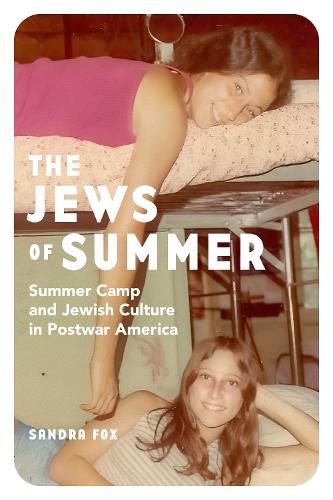Readings Newsletter
Become a Readings Member to make your shopping experience even easier.
Sign in or sign up for free!
You’re not far away from qualifying for FREE standard shipping within Australia
You’ve qualified for FREE standard shipping within Australia
The cart is loading…






In the decades directly following the Holocaust, American Jewish leaders anxiously debated how to preserve and produce what they considered authentic Jewish culture, fearful that growing affluence and suburbanization threatened the future of Jewish life. Many communal educators and rabbis contended that without educational interventions, Judaism as they understood it would disappear altogether. They pinned their hopes on residential summer camps for Jewish youth: institutions that sprang up across the U.S. in the postwar decades as places for children and teenagers to socialize, recreate, and experience Jewish culture. Adults’ fears, hopes, and dreams about the Jewish future inflected every element of camp life, from the languages they taught to what was encouraged romantically and permitted sexually. But adult plans did not constitute everything that occurred at camp: children and teenagers also shaped these sleepaway camps to mirror their own desires and interests and decided whether to accept or resist the ideas and ideologies their camp leaders promoted. Focusing on the lived experience of campers and camp counselors, The Jews of Summer demonstrates how a cultural crisis birthed a rite of passage that remains a significant influence in American Jewish life.
$9.00 standard shipping within Australia
FREE standard shipping within Australia for orders over $100.00
Express & International shipping calculated at checkout
In the decades directly following the Holocaust, American Jewish leaders anxiously debated how to preserve and produce what they considered authentic Jewish culture, fearful that growing affluence and suburbanization threatened the future of Jewish life. Many communal educators and rabbis contended that without educational interventions, Judaism as they understood it would disappear altogether. They pinned their hopes on residential summer camps for Jewish youth: institutions that sprang up across the U.S. in the postwar decades as places for children and teenagers to socialize, recreate, and experience Jewish culture. Adults’ fears, hopes, and dreams about the Jewish future inflected every element of camp life, from the languages they taught to what was encouraged romantically and permitted sexually. But adult plans did not constitute everything that occurred at camp: children and teenagers also shaped these sleepaway camps to mirror their own desires and interests and decided whether to accept or resist the ideas and ideologies their camp leaders promoted. Focusing on the lived experience of campers and camp counselors, The Jews of Summer demonstrates how a cultural crisis birthed a rite of passage that remains a significant influence in American Jewish life.